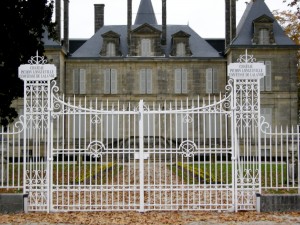 Yesterday, I wanted to treat myself to something particularly good and opened a bottle that I had actually put away for a tasting (comparison; Comtesse-Baron). The comparison - suggested by wine friend Artur - has not come about until today. The idea came up after a dispute about the merits of the two Pichon-Longueville estates: Who is ahead, the Baron or the Comtesse? I suspect that even a vertical tasting won't bring any fundamental clarification. It will mainly be a question of style: what does the Bordeaux drinker prefer, the rather taut, concise, concentrated Baron or the rather softer, somewhat differentiated, but also more diffuse Comtesse?
Yesterday, I wanted to treat myself to something particularly good and opened a bottle that I had actually put away for a tasting (comparison; Comtesse-Baron). The comparison - suggested by wine friend Artur - has not come about until today. The idea came up after a dispute about the merits of the two Pichon-Longueville estates: Who is ahead, the Baron or the Comtesse? I suspect that even a vertical tasting won't bring any fundamental clarification. It will mainly be a question of style: what does the Bordeaux drinker prefer, the rather taut, concise, concentrated Baron or the rather softer, somewhat differentiated, but also more diffuse Comtesse?
The two estates were united until the middle of the 19th century, then began - as so often: by division of inheritance - the peaceful competition of the two châteaux, which have the rank of deuxième grand cru classé. Almost twenty years ago, Pichon Baron was sold to the AXA insurance group, whereas the "general" of Pichon Lalande, Eliane de Lencquesaing, sold her majority shares to the Roederer champagne house in 2007. The Baron was built up by AXA with large investments to become a real prestige estate, whereas it has become rather quiet around the Comtesse. However, the last vintages can be seen, respectively drunk.
The 1988 vintage, however, was created before the rapid development that has seized the wine estates in the past ten years. It is a classic Bordeaux, which is slowly recovering from the crisis of the 70ies and the beginning of the 80ies. The Pichon wines have - actually untypical for the Left Bank of the Gironde - a relatively high Merlot content (usually over 30%) and are therefore - at least they used to be - quite dependent on weather conditions. Merlot is precocious and also susceptible to mildew. When the weather is not right and favours the later Cabernet, for example, Pichon Lalande struggled. This was obviously the case in 1988.
The great name cannot hide the fact that this wine is far below the potential of the château. In any case, it did not survive the 25 years of storage well. It is still drinkable, but the tannins are a bit thin and tugged, the fruit is diffuse even in the small rest, it has an open but deflated bouquet and little spice. One of the weakest Pichon Comtesse I have ever drunk.
So little came of the "make me love it"! It doesn't help that Parker originally gave the wine 90 points, nor that a bottle is now traded at around 100 euros. René Gabriel says somewhat sarcastically: "Hurray for the label drinkers".